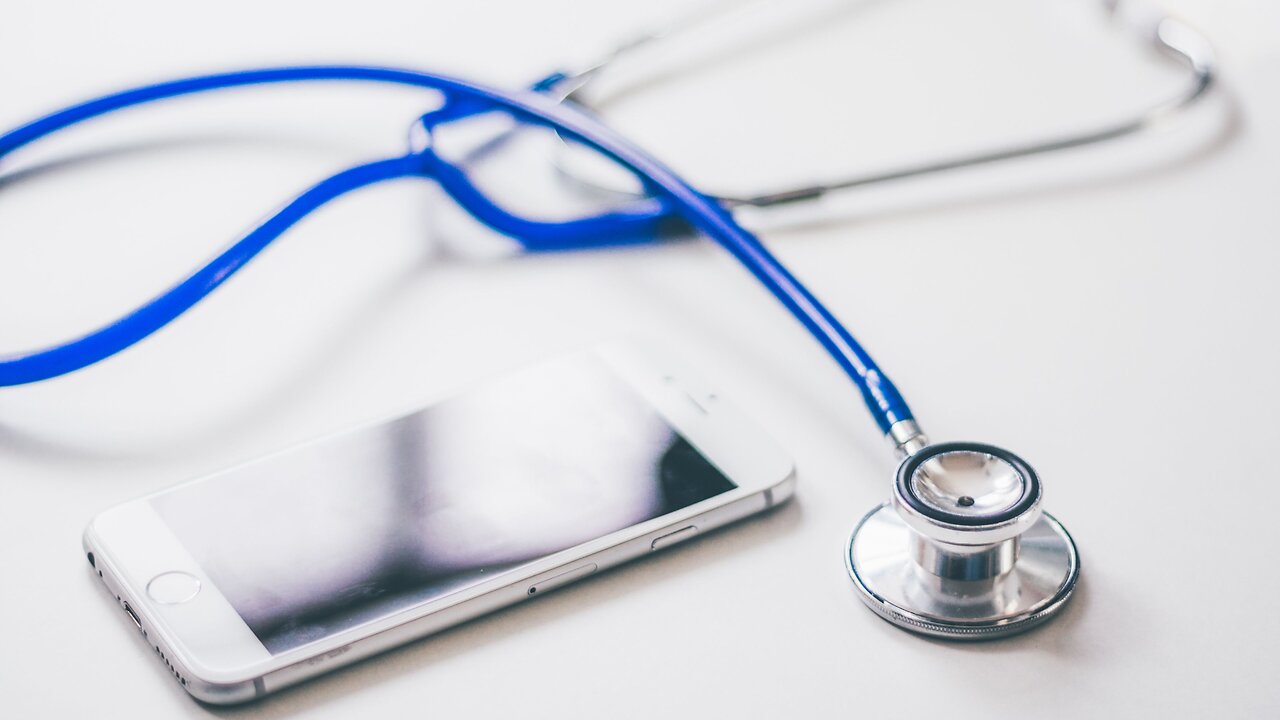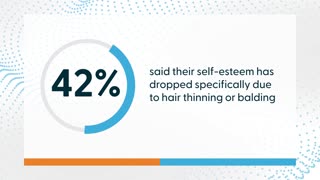Premium Only Content

Back to 2011? Many patients want more tech in doctor visits
Is your doctor stuck in 2011? A new survey found six percent of Americans feel like they're walking "backwards in time" 14 years whenever they have a doctor's appointment.
The poll of 2,000 U.S. adults who have visited a doctor within the past 12 months found two in three believe having a modern or digitally-forward healthcare practice would improve their experience during a doctor visit.
And half believe the use of new technology would also improve their healthcare experiences.
In fact, over the next 5 to 10 years, people envision the healthcare industry changing to incorporate new ways of care access (52%), wearables that can track health more accurately (46%) and include new physical locations for care access (43%).
Others believe it will include having a more personalized care experience (42%), digital education tools in the doctor's office (36%) and new roles for delivering care (36%).
Commissioned by PatientPoint and conducted by Talker Research, the study found 76% of people believe their doctor's office already feels modern and up-to-date.
"Modern" doctors offices are defined by having appointment reminders sent via text or email (71%), patient portal access (63%), online scheduling (53%), digital health records (53%) and modern waiting areas with phone chargers, sign-in tablets, educational TV screens and more (45%).
Respondents believe it will become "standard practice" in the near future to schedule appointments without needing to speak to a human (53%), have instant test results delivered to them (45%) and be immediately checked in for appointments via facial recognition and biometrics (39%).
Nearly half (45%) said they're more likely to trust a doctor's office that is digitally advanced than one that isn't.
“This research shows that patients aren’t afraid of innovation—they simply want assurance that technology is used responsibly to improve their care,” said Kyle Barich, chief marketing officer, PatientPoint. “What’s striking is how much trust they continue to place in their doctors to deliver that personalized experience. These insights reinforce the importance of equipping providers with the right tools and content at the point of care.”
The survey also revealed how big of an impact people's trust in how their medical data is handled has on the future of healthcare.
More than four in five (83%) said they trust their healthcare provider and the information they share.
They're most comfortable letting their primary doctors (92%), any specialty doctors (88%) and their doctor's medical staff (85%) have access to their health data and medical history.
Meanwhile, they are most uncomfortable with the government (60%), AI and chatbots (47%), and med-tech device companies (36%) handling the same information.
Two-thirds said they feel comfortable sharing their medical information to receive personalized health brand messages, such as treatment options, medication, or health-focused product information.
Eighty-eight percent would feel most comfortable getting their medical information directly from their doctor — while only 3% would be comfortable receiving it from an AI chatbot or platform.
Respondents appeared to keep AI separated from all things medical. When researching their health symptoms, they first turn to search engines (32%), followed by their doctor's office (31%) or medical information websites (26%). By comparison, only 5% said they use AI chats.
“Patients’ views on AI in healthcare ultimately come down to trust,” continued Kyle Barich. “They want confidence that their medical data is protected and used responsibly, not exploited. At the same time, they still value the irreplaceable role of in-person conversations with their doctors to guide the next steps in their care.”
WHAT WILL BECOME "STANDARD" IN THE FUTURE OF DOCTOR APPOINTMENTS?
Scheduling appointments without needing to speak to a person - 53%
Getting instant test results - 45%
Getting checked in via facial recognition or biometrics - 39%
Using AI for diagnoses and note-taking - 37%
Personalized medication based on medical history and genetics - 37%
Virtual medical assistants - 35%
Instant diagnosis - 34%
Digital intake of wearable device data - 30%
Having a robot take my vitals instead of a nurse or physician's assistant - 25%
Using augmented reality glasses to “scan” the patient, take notes or uncover issues - 19%
Survey methodology:
Talker Research surveyed 2,000 US respondents who have gone to the doctors in the past 12 months; the survey was commissioned by PatientPoint and administered and conducted online by Talker Research between July 22 and July 29, 2025.
We are sourcing from a non-probability frame and the two main sources we use are:
● Traditional online access panels — where respondents opt-in to take part in online market research for an incentive
● Programmatic — where respondents are online and are given the option to take part in a survey to receive a virtual incentive usually related to the online activity they are engaging in
Those who did not fit the specified sample were terminated from the survey. As the survey is fielded, dynamic online sampling is used, adjusting targeting to achieve the quotas specified as part of the sampling plan.
Regardless of which sources a respondent came from, they were directed to an Online Survey, where the survey was conducted in English; a link to the questionnaire can be shared upon request. Respondents were awarded points for completing the survey. These points have a small cash-equivalent monetary value.
Cells are only reported on for analysis if they have a minimum of 80 respondents, and statistical significance is calculated at the 95% level. Data is not weighted, but quotas and other parameters are put in place to reach the desired sample.
Interviews are excluded from the final analysis if they failed quality-checking measures. This includes:
● Speeders: Respondents who complete the survey in a time that is quicker than one-third of the median length of interview are disqualified as speeders
● Open ends: All verbatim responses (full open-ended questions as well as other please specify options) are checked for inappropriate or irrelevant text
● Bots: Captcha is enabled on surveys, which allows the research team to identify and disqualify bots
● Duplicates: Survey software has “deduping” based on digital fingerprinting, which ensures nobody is allowed to take the survey more than once
It is worth noting that this survey was only available to individuals with internet access, and the results may not be generalizable to those without internet access.
-
 1:09
1:09
SWNS
7 days agoWhy this is America’s No. 1 aging panic?
20 -
 LIVE
LIVE
The Charlie Kirk Show
1 hour agoCancel Netflix? + The Secret Service Disaster + Turning Point Everywhere | Tatum, Cocca, Gaffrey
8,442 watching -
 LIVE
LIVE
Dr Disrespect
2 hours ago🔴LIVE - DR DISRESPECT - BLACK OPS 7 MULTIPLAYER GAMEPLAY - NEW!
1,682 watching -
 40:54
40:54
The Rubin Report
2 hours ago‘The View’ Hosts Aghast When Mamdani Accidentally Repeats Hamas Talking Points
24.6K50 -
 1:50:50
1:50:50
Benny Johnson
3 hours agoElon Declares WAR on Netflix, Stock COLLAPSES as Millions CANCEL | Dems HUMILIATED in Trump Meme War
51.9K93 -
 DVR
DVR
Bannons War Room
7 months agoWarRoom Live
39M9.05K -
 1:00:41
1:00:41
VINCE
4 hours agoThe Schumer Shutdown Shafts Americans Again | Episode 138 - 10/02/25
158K112 -
 LIVE
LIVE
qixso
1 hour agoBO7 IS HERE TAP IN !! | @qixso
35 watching -
 30:17
30:17
Simply Bitcoin
3 hours ago $0.67 earnedBitcoin Crucible Episode 2 w/ Alex Stanczyk
19.3K5 -
 1:33:20
1:33:20
Dear America
4 hours agoGUEST: ERIC TRUMP! Dems ADMIT to Shutdown! + Feds Move to Tennessee!!
133K35